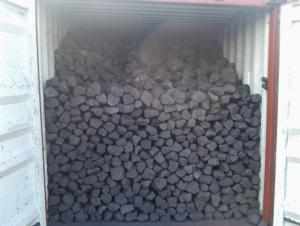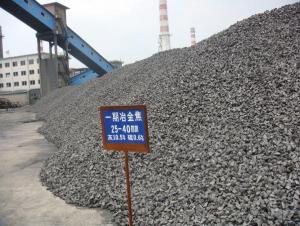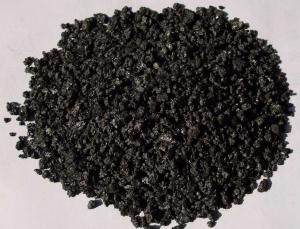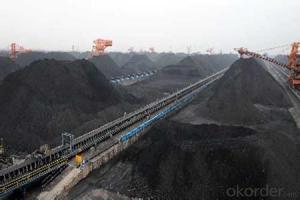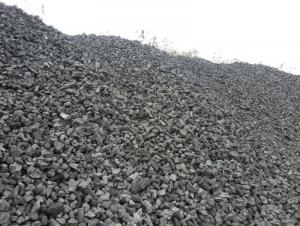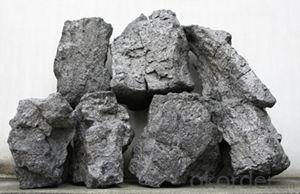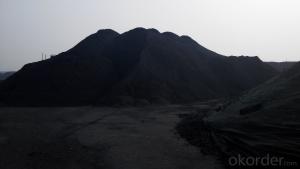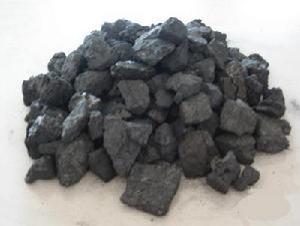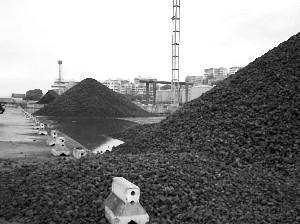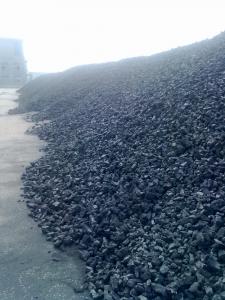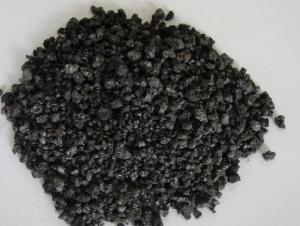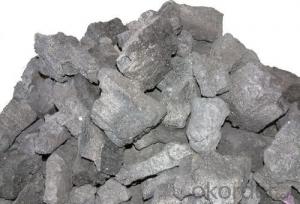MET COKE of Coke Strength after Reactivity 65
- Loading Port:
- Tianjin
- Payment Terms:
- TT OR LC
- Min Order Qty:
- 100 m.t.
- Supply Capability:
- 3000 m.t./month
OKorder Service Pledge
OKorder Financial Service
You Might Also Like
Our company began to export coke when China cancelled 40% of coke export tariffs and quotas on January 1, 2013.
We export many kinds of coke, such as metallurgical coke (met coke) of 30-80mm, the NUT coke of 10 to 30 mm, coke breeze of 0 to 10 mm, and so on.
We can offer below grade met coke, origin from China.
Quality (Specifications guaranteed at Load Port):
Ash 12.5% Maximum (on dry basis)
Volatile Matters 1.5% Maximum (on dry basis)
Sulphur 0.65% Maximum (on dry basis)
Phosphorous 0.035% Maximum (on dry basis)
Micum 10 8.0% Maximum
Micum 40 82.0% Minimum
CSR (ASTM Standard) 65.0% Minimum
CRI (ASTM Standard) 28.0% Maximum
Size 30-90mm 90.0% Minimum
Under 30mm 5.0% Maximum
Over 90mm 5.0% Maximum
Moisture 5.0% Maximum (as received)
Should any of these items be of interest to you, please let us know. We will be happy to give you a quotation upon receipt of your detailed requirements.
Let me know your demands then I can check availability.
- Q: What does Coke test index M25 mean?
- Coke is the solid product of high temperature carbonization, the main component of which is carbon, which is a kind of crack and irregular pore structure. The number of cracks has a direct impact on the strength and crushing strength of the coke, the index is generally measured in terms of crack degree (the number of cracks in the unit volume coke)
- Q: Coke is divided into several kinds of specifications ah
- Three: 1 2 3 coke metallurgical coke of high sulfur cokeCoke is in coal under the condition of air isolation, heating to 950-1050 DEG C, after drying, pyrolysis, melting, bonding, curing and contraction of the final stage is made, the process is called high temperature coking (high temperature carbonization). Coke obtained from high temperature coking for blast furnace smelting, casting and gasification. Coke oven gas produced in the process of coking and recovery is not only a high calorific value of fuel, but also an important industrial raw material for organic synthesis. Coke is mainly used in blast furnace ironmaking and smelting of non-ferrous metals such as copper, lead, zinc, titanium, antimony, mercury and so on.
- Q: After the long-term use of non stick pan, oil stains can not be effectively removed, over a long period of time in the non stick coating on the formation of a layer of coke, the effect of losing non stick. As a result of this layer of coke is relatively dense and smooth, scouring cloth has been ineffective, steel ball can not be used to damage the coating, what chemical or physical methods to remove this layer of coke?
- Soak in hot water for a few hours (or a day and night).Two, with cooking shovel (Mason's Pihui knife is best) to remove surface soft.Three, the same with a spade close to the bottom of the pot to eradicate. Until the last thing left is black.
- Q: How much coke can a ton of coal
- The ratio is about 1 to 0.7, that is to say, 1 kilograms of about 0.7 kg coke coking coal coke, coke did not reach 0.75 kg, 0.71.Don't listen to them char 1.4:1, personal feeling.
- Q: What is the phosphorus content in coke
- Coke obtained from high temperature coking for blast furnace smelting, casting and gasification. Coke oven gas produced in the process of coking and recovery is not only a high calorific value of fuel, but also an important industrial raw material for organic synthesis.
- Q: What is the difference between coke and carbon residue? Coke is a high-temperature refining, carbon residue can be used for civilian fuel it?
- Coke concept:Bituminous coal in the absence of air is heated to 950-1050 DEG C, after drying, pyrolysis, melting, bonding, curing and contraction of the final stage of this process is made of coke, coking high temperature (high temperature carbonization). By high temperature coking coke for blast furnace smelting, casting and gas generated in the process of coking. After the recovery and after the purification of coke oven gas is not only a high calorific value of fuel, and is an important raw material for organic synthesis industry. Metallurgical coke is coke, coke, iron alloy coke and non-ferrous metal smelting coke for metallurgical coke collectively. More than 90% were used for blast furnace ironmaking blast furnace coke, so often referred to as metallurgical coke is coke. The special cupola molten iron and coke. Coke is the main fuel cupola molten iron. It is melting charge and molten steel overheating, the support column to maintain its good permeability. Therefore, coke should Have large blocks, low reactivity, porosity is small, with impact crushing strength, low ash and sulfur enough.
- Q: Listen to a lot of people say that steel is now coke is not true?
- Steelmaking is definitely not coke, but now most of the very mature iron making technology needs coke, the future direction of development of iron is not used or less coke
- Q: What does the M40% and M25% mean in the analysis of coke?
- M40% and M25% represent the breaking strength rate, 40%>25%, which means that the M40% coke is more resistant than M25%
- Q: Effect of coke powder ratio on the index
- Quality index of cokeHigh temperature carbonization coke is the solid product, its main ingredient is carbon, the pore structure of spores (or pore porous) with crack and irregular crack. Have a direct impact on how much strength and crushing strength of coke, the index of crack usually (crack length per unit volume of coke in the index) to measure indicator. Pore structure is mainly used for measuring the porosity of spores (pore volume percentage of the total volume of coke) said that it affects the reactivity and strength of coke. The coke used for different purposes, the porosity index requirements change, but it usually requires 40 to 45% metallurgical coke porosity, casting requirements of 35 to 40%, the export of coke need to crack about 30%. coke with high and low levels of porosity, the use of coking coal has a direct relationship, such as gas refining is mainly coke, crack, high porosity, low strength; as in coking coal Break the coke refining base of small, low porosity and high strength. The strength of coke is usually the crushing strength and abrasion resistance of two indexes to represent the strength of coke can be broken. No cracks or defects and M40 values along the fault reference external shock resistance structure; wear strength of coke coke refers to the ability to form glass the surface resistance to foreign friction and no fragments or powder, expressed as the value of M10. The degree of M40 crack coke compressive strength affect the value, value of pore structure of coke impact wear resistance of M10 spores. The determination of M40 M10 and a lot of value, many German migon drum test our method.
- Q: What's the difference between coke and coke?
- Higher than 550 DEG C, semi coke continues to decompose, precipitation of the remaining volatiles (the main component is hydrogen), semi coke weight loss at the same time contraction, the formation of cracks; temperature above the temperature of 800 degrees, the volume of semi coke hardens to form porous coke!
Send your message to us
MET COKE of Coke Strength after Reactivity 65
- Loading Port:
- Tianjin
- Payment Terms:
- TT OR LC
- Min Order Qty:
- 100 m.t.
- Supply Capability:
- 3000 m.t./month
OKorder Service Pledge
OKorder Financial Service
Similar products
Hot products
Hot Searches



